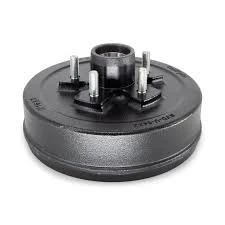
-
 Afrikaans
Afrikaans -
 Albanian
Albanian -
 Amharic
Amharic -
 Arabic
Arabic -
 Armenian
Armenian -
 Azerbaijani
Azerbaijani -
 Basque
Basque -
 Belarusian
Belarusian -
 Bengali
Bengali -
 Bosnian
Bosnian -
 Bulgarian
Bulgarian -
 Catalan
Catalan -
 Cebuano
Cebuano -
 Corsican
Corsican -
 Croatian
Croatian -
 Czech
Czech -
 Danish
Danish -
 Dutch
Dutch -
 English
English -
 Esperanto
Esperanto -
 Estonian
Estonian -
 Finnish
Finnish -
 French
French -
 Frisian
Frisian -
 Galician
Galician -
 Georgian
Georgian -
 German
German -
 Greek
Greek -
 Gujarati
Gujarati -
 Haitian Creole
Haitian Creole -
 hausa
hausa -
 hawaiian
hawaiian -
 Hebrew
Hebrew -
 Hindi
Hindi -
 Miao
Miao -
 Hungarian
Hungarian -
 Icelandic
Icelandic -
 igbo
igbo -
 Indonesian
Indonesian -
 irish
irish -
 Italian
Italian -
 Japanese
Japanese -
 Javanese
Javanese -
 Kannada
Kannada -
 kazakh
kazakh -
 Khmer
Khmer -
 Rwandese
Rwandese -
 Korean
Korean -
 Kurdish
Kurdish -
 Kyrgyz
Kyrgyz -
 Lao
Lao -
 Latin
Latin -
 Latvian
Latvian -
 Lithuanian
Lithuanian -
 Luxembourgish
Luxembourgish -
 Macedonian
Macedonian -
 Malgashi
Malgashi -
 Malay
Malay -
 Malayalam
Malayalam -
 Maltese
Maltese -
 Maori
Maori -
 Marathi
Marathi -
 Mongolian
Mongolian -
 Myanmar
Myanmar -
 Nepali
Nepali -
 Norwegian
Norwegian -
 Norwegian
Norwegian -
 Occitan
Occitan -
 Pashto
Pashto -
 Persian
Persian -
 Polish
Polish -
 Portuguese
Portuguese -
 Punjabi
Punjabi -
 Romanian
Romanian -
 Russian
Russian -
 Samoan
Samoan -
 Scottish Gaelic
Scottish Gaelic -
 Serbian
Serbian -
 Sesotho
Sesotho -
 Shona
Shona -
 Sindhi
Sindhi -
 Sinhala
Sinhala -
 Slovak
Slovak -
 Slovenian
Slovenian -
 Somali
Somali -
 Spanish
Spanish -
 Sundanese
Sundanese -
 Swahili
Swahili -
 Swedish
Swedish -
 Tagalog
Tagalog -
 Tajik
Tajik -
 Tamil
Tamil -
 Tatar
Tatar -
 Telugu
Telugu -
 Thai
Thai -
 Turkish
Turkish -
 Turkmen
Turkmen -
 Ukrainian
Ukrainian -
 Urdu
Urdu -
 Uighur
Uighur -
 Uzbek
Uzbek -
 Vietnamese
Vietnamese -
 Welsh
Welsh -
 Bantu
Bantu -
 Yiddish
Yiddish -
 Yoruba
Yoruba -
 Zulu
Zulu
drum brakes stuck engaged
Understanding Drum Brakes Troubleshooting Stuck Engaged Issues
Drum brakes are a common component in many vehicles, especially older models and certain types of heavy machinery. While they are effective at providing strong braking power, they can sometimes encounter issues, one of the most troubling being when they become stuck engaged. This occurs when the brake shoes remain in contact with the drum, creating a persistent drag that can lead to overheating, premature wear, and dangerous driving conditions. Understanding the causes and solutions to this problem is essential for any vehicle owner or mechanic.
How Drum Brakes Work
To understand why drum brakes may become stuck, it's important to first grasp how they function. Drum brakes operate through the use of brake shoes that press against the inside of a revolving drum when the brake pedal is engaged. This friction slows down the rotation of the wheel, thus bringing the vehicle to a stop. The return springs then pull the shoes away from the drum when the brakes are released, allowing the wheels to turn freely.
Common Causes of Stuck Drum Brakes
1. Corrosion and Rust Over time, moisture can accumulate within the drum, leading to rust and corrosion. This can cause the brake shoes to stick to the drum, especially if the vehicle has been sitting unused for an extended period.
2. Faulty Return Springs The return springs are crucial for pulling the brake shoes back into their resting position after the brakes are released. If these springs wear out or break, the shoes can remain in contact with the drum, leading to a stuck condition.
3. Incorrect Adjustment Drum brakes require proper adjustment to function correctly. If they are too tightly adjusted, the brake shoes can remain engaged even when the pedal is fully released.
4. Worn Components Over time, parts such as the brake shoes, drums, and wheel cylinders can wear out. When these components become too worn, they may not retract properly, resulting in a stuck brake.
5. Fluids and Contaminants Leaking brake fluid or contaminants can affect braking performance. Oil or brake fluid on the shoes or drum can diminish friction, leading to a malfunction and potential sticking.
Signs Your Drum Brakes Are Stuck
drum brakes stuck engaged

2. Overheating A stuck brake can cause excessive heat. You might notice that one of your wheels is hotter than the others after driving.
3. Pulling to One Side If the vehicle pulls to one side when braking, it could be due to one brake being engaged while the other is functioning normally.
4. Reduced Performance You may experience a sudden decrease in braking power or a feeling of dragging when driving.
Solutions and Preventive Measures
If you suspect that your drum brakes are stuck, it’s vital to address the issue promptly. Start by inspecting the brake system for any visible signs of damage or wear. If you're not comfortable doing this yourself, it’s best to consult a professional mechanic.
- Cleaning and Lubrication Clean the drum and brake components to remove rust and debris. Lubricate pivot points and adjusters to ensure smooth operation.
- Replacing Worn Parts If any components are found to be worn or damaged, they should be replaced. This could include brake shoes, drums, or springs.
- Regular Maintenance Regularly inspect your brake system as part of routine vehicle maintenance. This can help catch issues before they become serious problems.
In conclusion, while drum brakes are effective and reliable, issues like sticking can arise. By understanding the mechanics behind them and knowing the signs, you can maintain your vehicle’s braking system effectively. Always prioritize safety and seek professional advice if you are unsure about any repairs or maintenance tasks.
-
Rear Drum Brakes Maintenance TipsNewsAug.04,2025
-
Key Components Affecting Brake Drum FunctionNewsAug.04,2025
-
Important Inspection for Truck Drum BrakeNewsAug.04,2025
-
How to Prepare for Changing Rear Drum BrakesNewsAug.04,2025
-
Essential Tools for Cleaning Drum Brakes ProperlyNewsAug.04,2025
-
Brake Drum Function GuideNewsAug.04,2025
-
Safety Features of Red Brake DrumsNewsAug.01,2025
